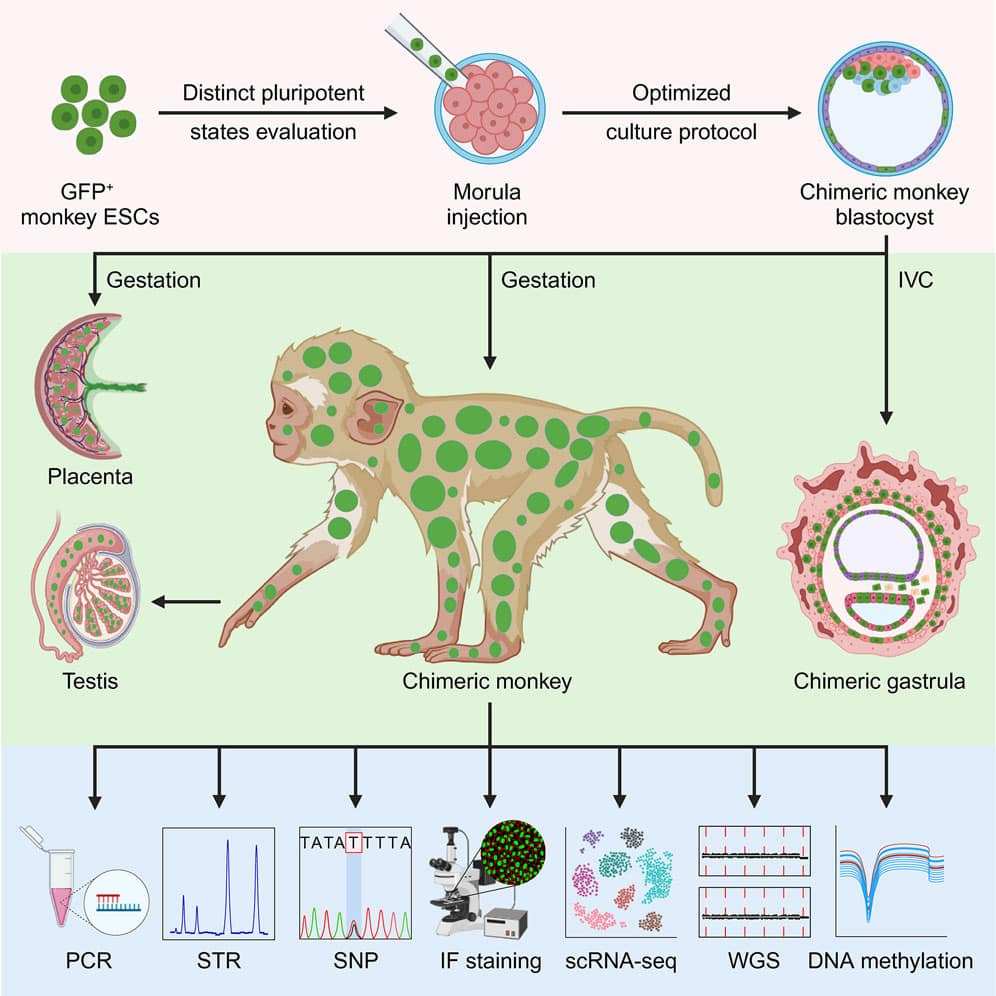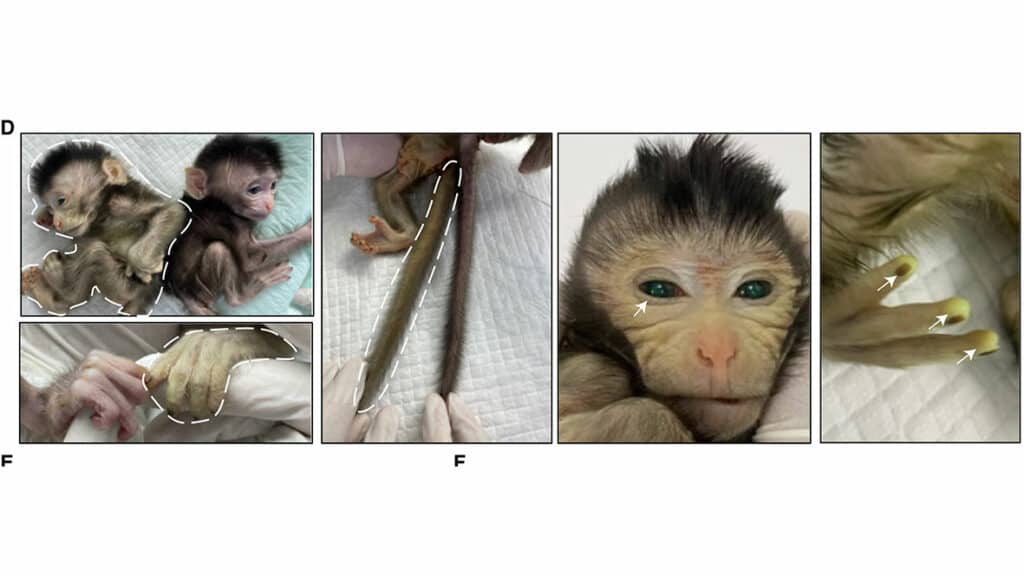While chimerism has not proven especially successful in other species, such as nonhuman primates, it is well-established in mice and rats created through early embryo complementation with homologous ESCs. It has been used for the generation of gene-targeting models.
Scientists at the Institute of Neuroscience, Center for Excellence in Brain Science and Intelligence Technology of the Chinese Academy of Sciences (CAS), and the Guangzhou Institute of Biomedicine and Health of CAS have created a live-birth chimeric monkey by using a significant contribution of embryonic stem cells (ESCs).
To create naïve monkey ESCs, scientists carefully examined various culture conditions and improved the processes for preparing the chimeric embryo culture. This method produced a living chimeric monkey with a substantial donor ESC contribution and an aborted fetus. A thorough characterization process revealed that donor cells integrated into the gonads and placenta of the chimeric monkeys with high efficiency (up to 90%).

Significant implications of this work include the investigation of ape naïve pluripotency and the genetic engineering of nonhuman monkeys. It advances our knowledge of the totipotency and pluripotency of ESCs from primate species and opens the door to generating sophisticated gene-modified nonhuman primate models.
Scientists noted, “The success of our approach relies on the optimization of the culture conditions for naive monkey ESC and the protocol for subsequent embryo culture in vitro. The high levels of chimerism in various tissues were extensively verified by combining the transgenic GFP reporter, STR, and SNP analyses, and two types of single-cell transcriptomic mapping.”

“We found a very high contribution of donor cells in the two monkey chimeras obtained, in sharp contrast to the absence of chimerism in all other fetuses. Mechanisms explaining this phenomenon could be the cell-cell competition and apoptosis-inducing factors within the host embryo.”
“Our approach for promoting ESC survival inside the early embryo could set a requirement for a relatively high percentage of ESCs to achieve an eventual survival.”
Journal Reference:
- Jing Cao, Wenjuan Li, Jie Li, Qiang Sun et al. Live birth of chimeric monkey with high contribution from embryonic stem cells. Cell. DOI: 10.1016/j.cell.2023.10.005
